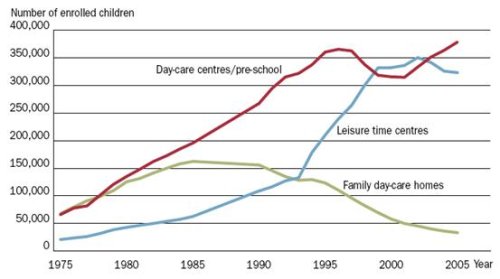One thing is for sure; the debate surrounding the provision of government supported maternity leave can be very emotional. What is generally missing from the debate is an objective look at the social outcomes we might expect from the new incentives that may be created by maternity leave legislation.
The pro-maternity leave lobby appear to want to socialise the cost burden of raising child, in terms of the opportunity cost of both parents working. The rationale behind this position is that as children are the source of future economic prosperity, and parents are incurring individual costs for future social benefits. Those who choose not to have children are free-riding on the back of those who do.
This argument is valid, and one that is accepted elsewhere in the world as justification for government provision of maternity leave benefits. But it is simplistic, and does not address the complete array of social impacts. To do this, you need to examine changes to incentives.
Advertisement
In a world with no government supported maternity leave or child care, the full cost of care is borne by a child’s parents. In this case, the decision whether one parent should stay home to provide care or should place the child in the care of others is subject to considerations such as the potential income of each parent, and the cost of care. The ratio between the cost of care and income will be a key deciding factor in the care decision - the higher the potential parental income relative to the cost of care, the more financially beneficial it is for the parents to stay at work.
Maternity leave payments and child care subsidies distort the incentives in the care decision. They reduce the cost of care, and increase the ratio of parental income to the cost of care, which encourages greater uptake of formal day care for pre-school age children.
In addition to this incentive, maternity leave encourages women planning to start a family to take up work in order to obtain maternity leave, rather than abstain from work until after children reach school age. A woman who works for a year before each child to obtain maternity leave could be $10,000 better off per child than a woman who resigns in order to stay home and care for their child.
The poster child of the paid maternity leave lobby is Sweden. In 1974 Sweden lead the world in providing 180 days paternal leave at 90 per cent of the parent’s previous salary. This expanded to nine months in 1978, and has since undergone many changes.
Even as the pro-maternity poster child, the Swedish experience provides us with clear evidence of the unintended consequences of such policies. For example, 80 per cent of Swedish children aged less than five years attend formal day care. This figure is startling, considering that currently one parent is paid to stay home for a year - or 20 per cent of this time. The 80 per cent figure appears to hide a near 100 per cent figure for children aged one to five. In Australia, the proportion of children under five in formal day care is about 40 per cent.
The impact of changing incentives in the care decision faced by parents can be observed by examining the long term trends in Sweden against changing policies. The graph below is of the period following the introduction of maternity leave in 1974. In addition to maternity leave formal child care is also subsidised, and in the 1970s and 1980s Swedish state and municipalities “both covered approximately 45 per cent of the fees, leaving the remaining 10 per cent to be covered by parental fees”; and “… by 1998, 17 per cent of the costs of childcare were being covered by parental fees”. (Swedish National Agency for Education. 2006)
Advertisement

Swedish National Agency for Education. Descriptive data on pre-school activities, school-age childcare, schools and adult education in Sweden 2006 Report no.83. Available here.
The impact of reduced subsidisation of child care in the 1990s resulted in a significant decline in the number of children in formal care, as shown in the graph above. The increasing uptake in 2001 is also explained by policies impacting the incentive in the care decision faces by parents:
In July 2001 the government expanded childcare to include children of parents who are unemployed and in January 2002 to include children of parents who are on parental leave looking after a sibling (Swedish National Agency for Education, 2003). In addition, in January 2003 all children aged 4-5 became entitled to 525 hours of free attendance in childcare per year (Swedish National Agency for Education, 2003). These changes have resulted in a more universal childcare system. Today, 80 per cent of children aged 1-5 attend pre-school, while 75 per cent of children aged 6-9 attend leisure-time centres. (Swedish National Agency for Education. 2006)
In the end, it appears maternity leave policies may not bring families closer together, but create a generation where parents and children become strangers.
Consider this comment (PDF 137KB):
Policies such as childcare and parental leave have meant that the majority of Swedish women are employed in the labour market and remain there throughout their lives, with only minor interruptions after the birth of a child.
Is this the outcome we are looking for as a society? Maybe it’s just a personal opinion, but a society where children become simply a minor career interruption, with their care out-sourced as quickly as possible, is not my preferred future.